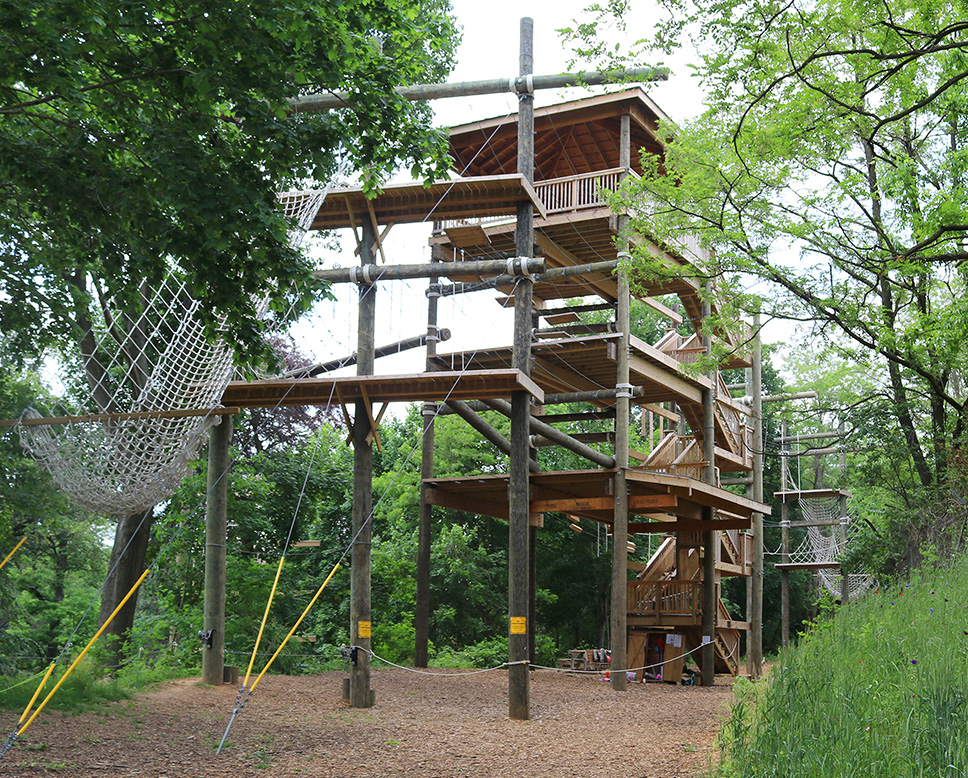
If you’ve ever been to our headquarters at The Discovery Center, you’ve likely noticed the large wooden structure with ropes and wires and wondered what it is and how it’s used. That is the James McLane Family Challenge Course, our high-element aerial teams course (ATC).
The ATC is our “classroom” designed to foster lessons in team building and social responsibility, as well as how to confront challenge with a healthy perspective and emotional/physical regulation.
“Participants can get really nervous when they first see the ATC” says Jack Organ, Center Based Program Coordinator for Philadelphia Outward Bound School (POBS). “Once on it, they realize some personal limits, and then decide whether or not they’re going to cross them. And individuals within the group get to decide how much they’re going to support their team members.”
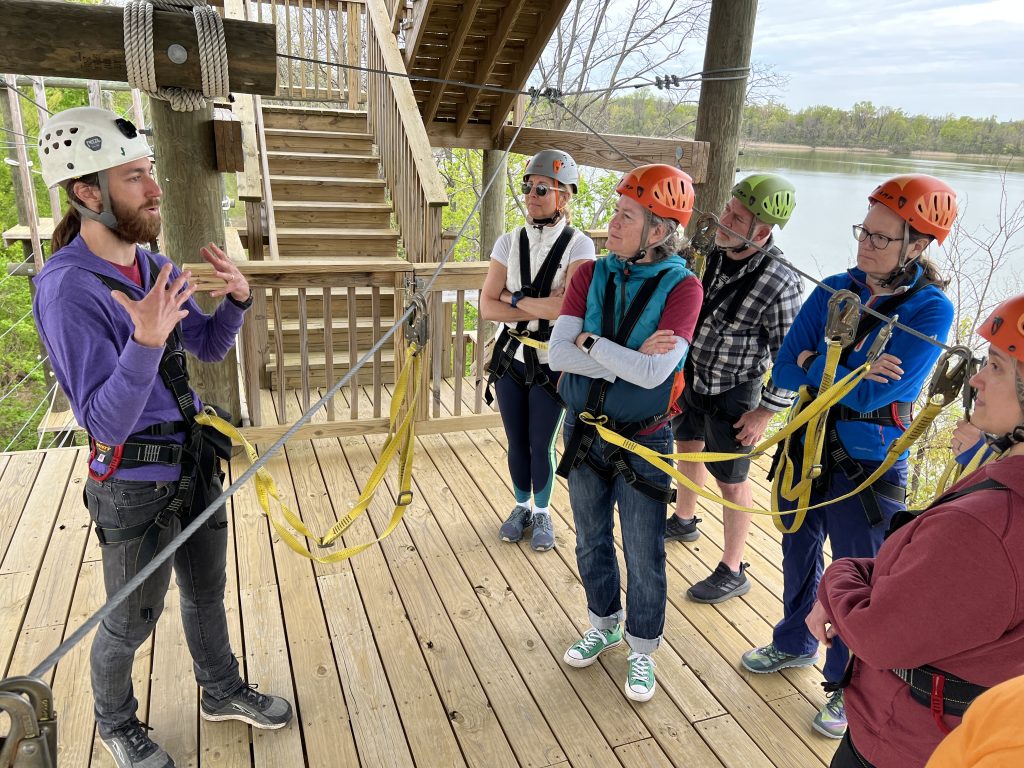
A key purpose of the ATC, as the name suggests, is that it’s designed as an educational team activity. Our participants learn about the safety gear and climbing techniques together, traverse as a group, and in many ways, will depend on each other in order to have the most positive, meaningful experience.
To mitigate participants’ initial fears, our instructors use the concept of “inviting optimum participation” (IOP) as a guide for facilitating groups on the ATC. This framework encourages instructors to make a challenging activity as accessible as possible, allows multiple ways for individuals and teams to meaningfully participate, and lessens anxiety among participants all within a single activity design.
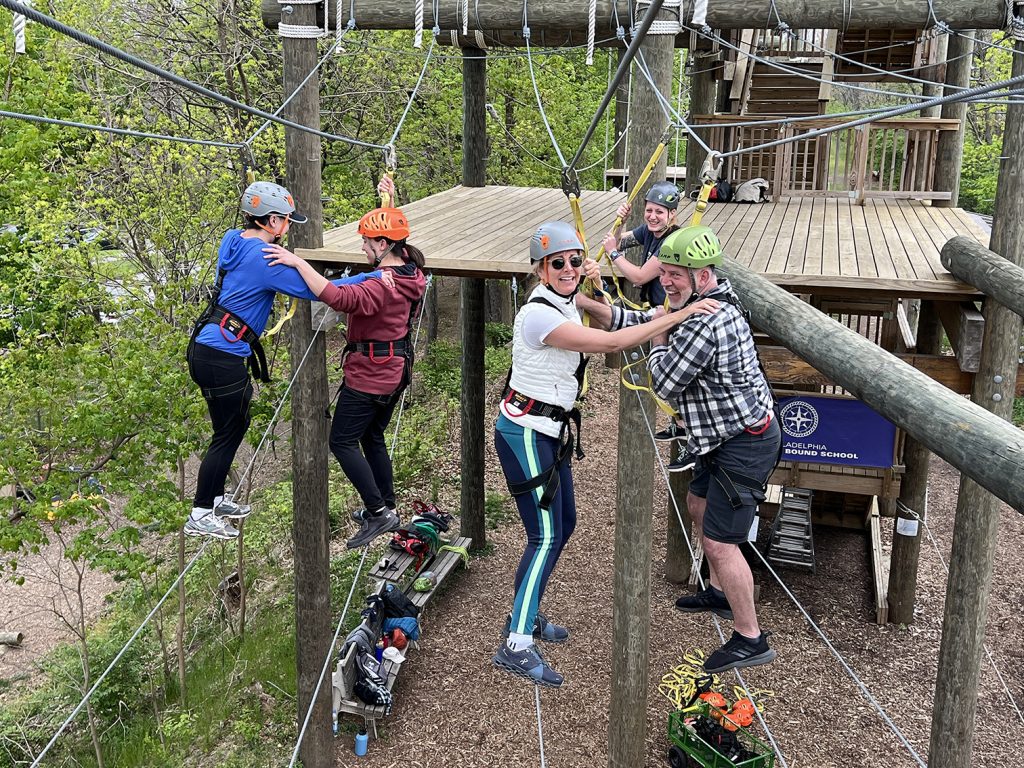
POBS uses the ATC as a medium for teambuilding and promoting personal development for our participants. In that respect, our ATC is different than other recreational aerial elements, like a roller coaster for example, which places greater emphasis on having fun than on education or extracting meaning. The ATC, designed with the intention of groups tackling challenges together, is used as a meaningful educational component during an Insight Program, and having fun is a welcomed byproduct.
“A lot of students who come to our programs have the recreational idea of an aerial element in their heads,” says Organ. “They have an idea that the ATC is all about fun, all about the individual experience. But here, the ATC goes deeper. It’s an educational group experience.”
So what could individuals and groups gain while on our ATC compared to a more recreational aerial experience?
“One isn’t better than another. But if you come to a POBS program, you will almost undoubtedly walk away being a little bit changed,” says Organ. “It’s a guarantee that while on our ATC, you and your group will be supported in overcoming fear, and that you will be coached on pulling out more meaning from the experience while you’re there. The experience can become a seminal moment in your life.”
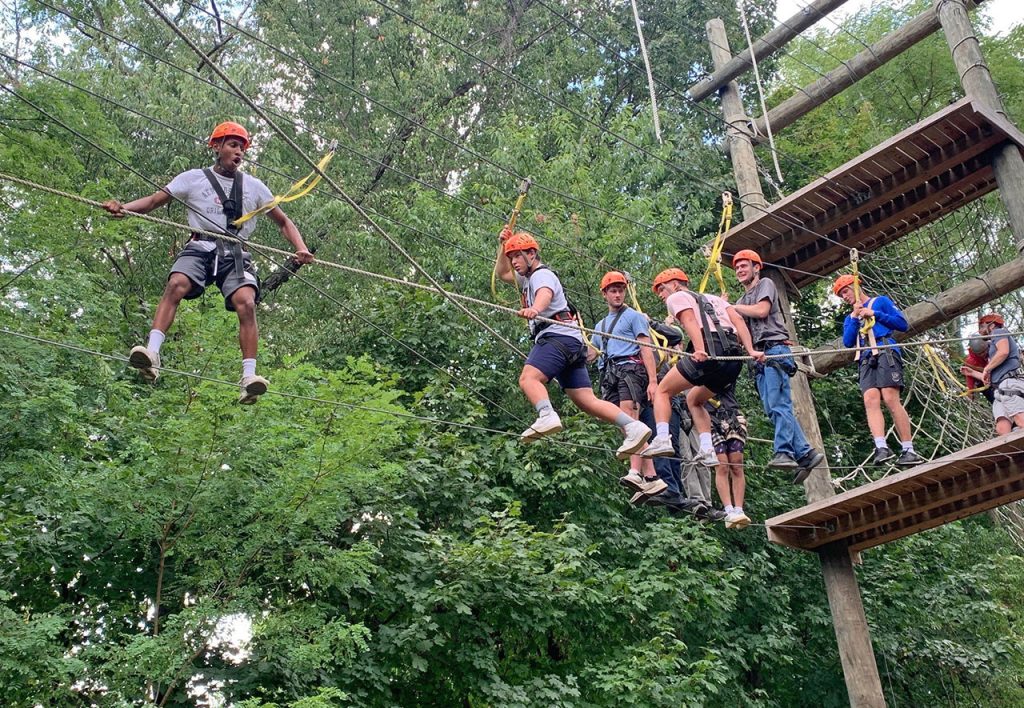
It’s worth restating that, while our ATC offers plenty of opportunities for personal development, it does so through team activities.
“I’ve seen groups have a super meaningful collective experience,” says Organ. “The group will get to a point where they’re taking care of each other’s emotional needs, watching out for each other physically, and get to a consensus moment of accepting the group challenge. These are summit moments on the ATC, where an entire group is going across an element in lockstep.”
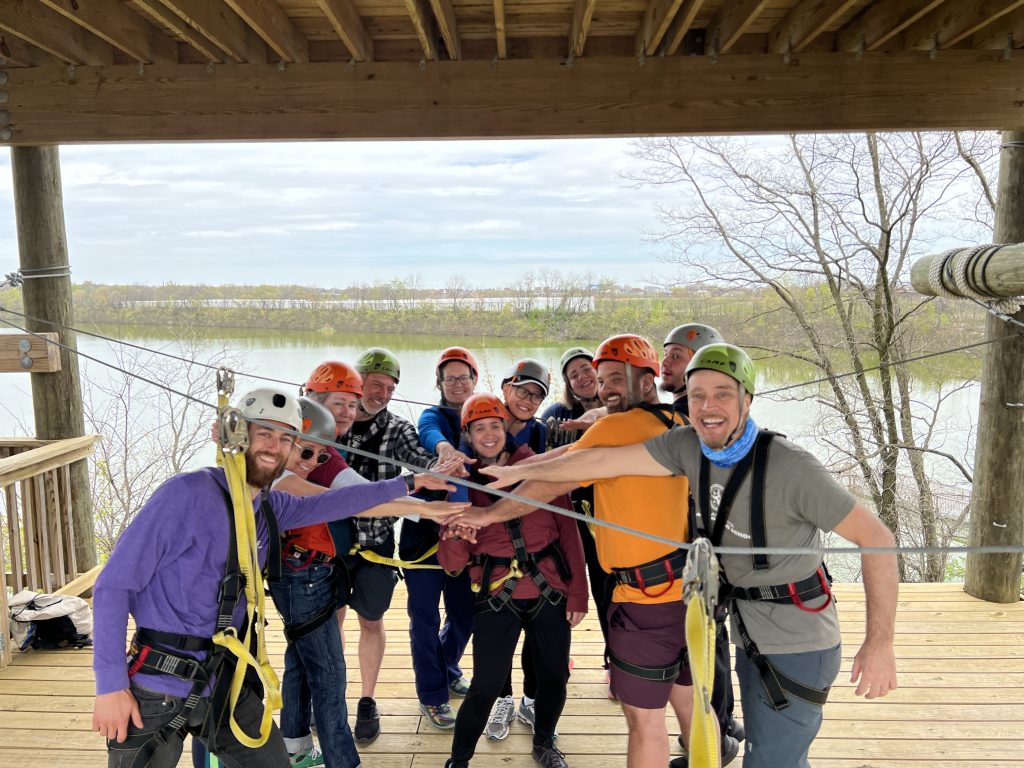
Make no mistake: the ATC is an exciting, adrenaline-fueled experience. It catapults participants into a decisive moment of choosing how they’ll engage in an environment with high stress, perceived risk, and opportunity for intrinsic rewards.
If the ATC seems like a harrowing experience, the rewards of participating are profoundly simple and human.
“Once participants get back on the ground, you can see they’ve made the decision support each other, and come together,” says Organ. “They’ve grown from a group into a team.”
